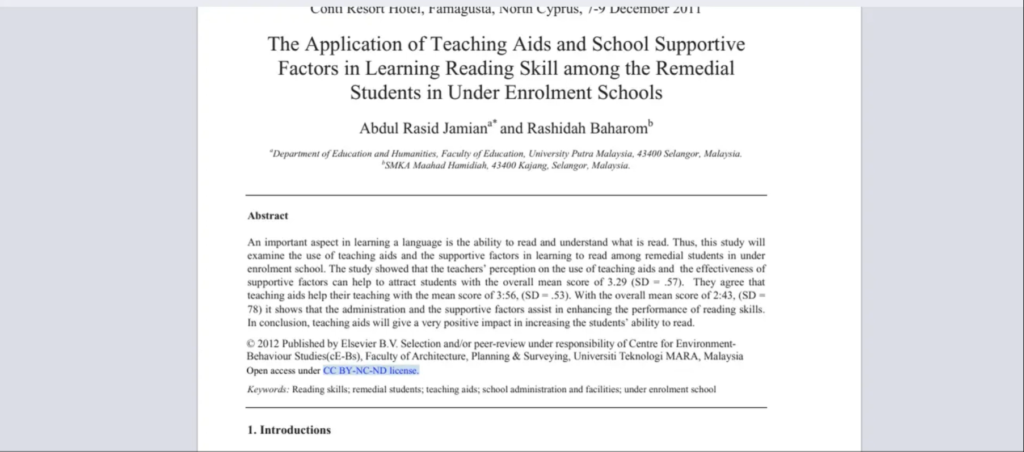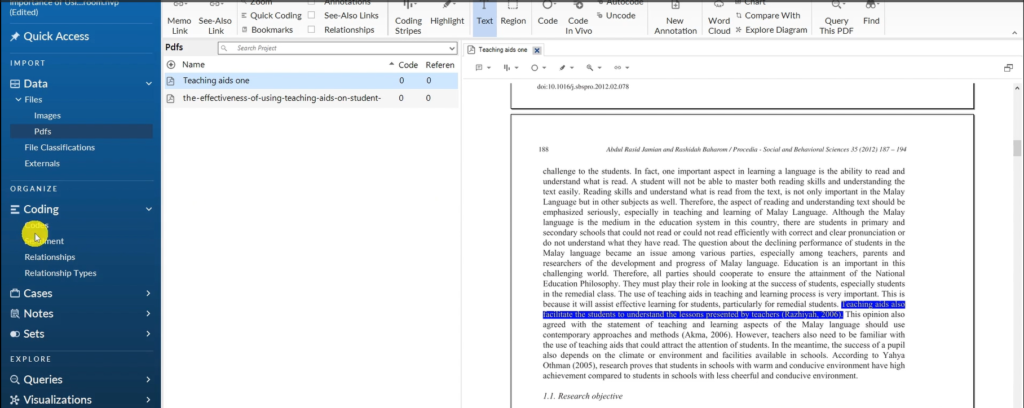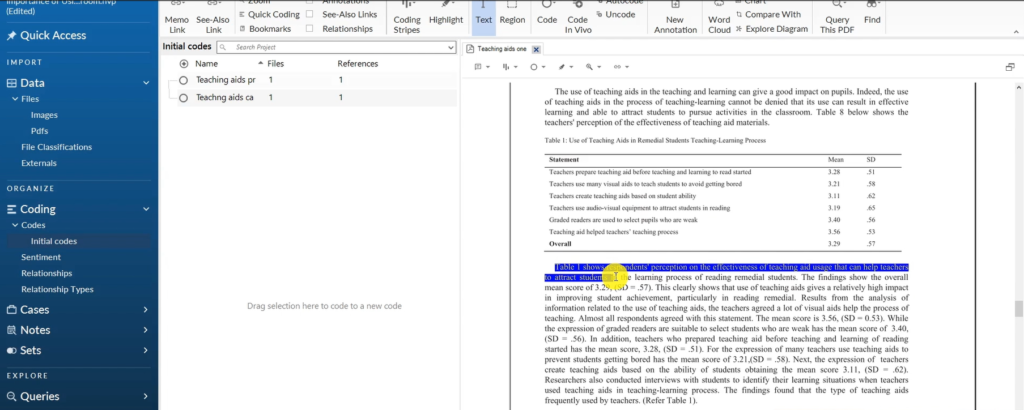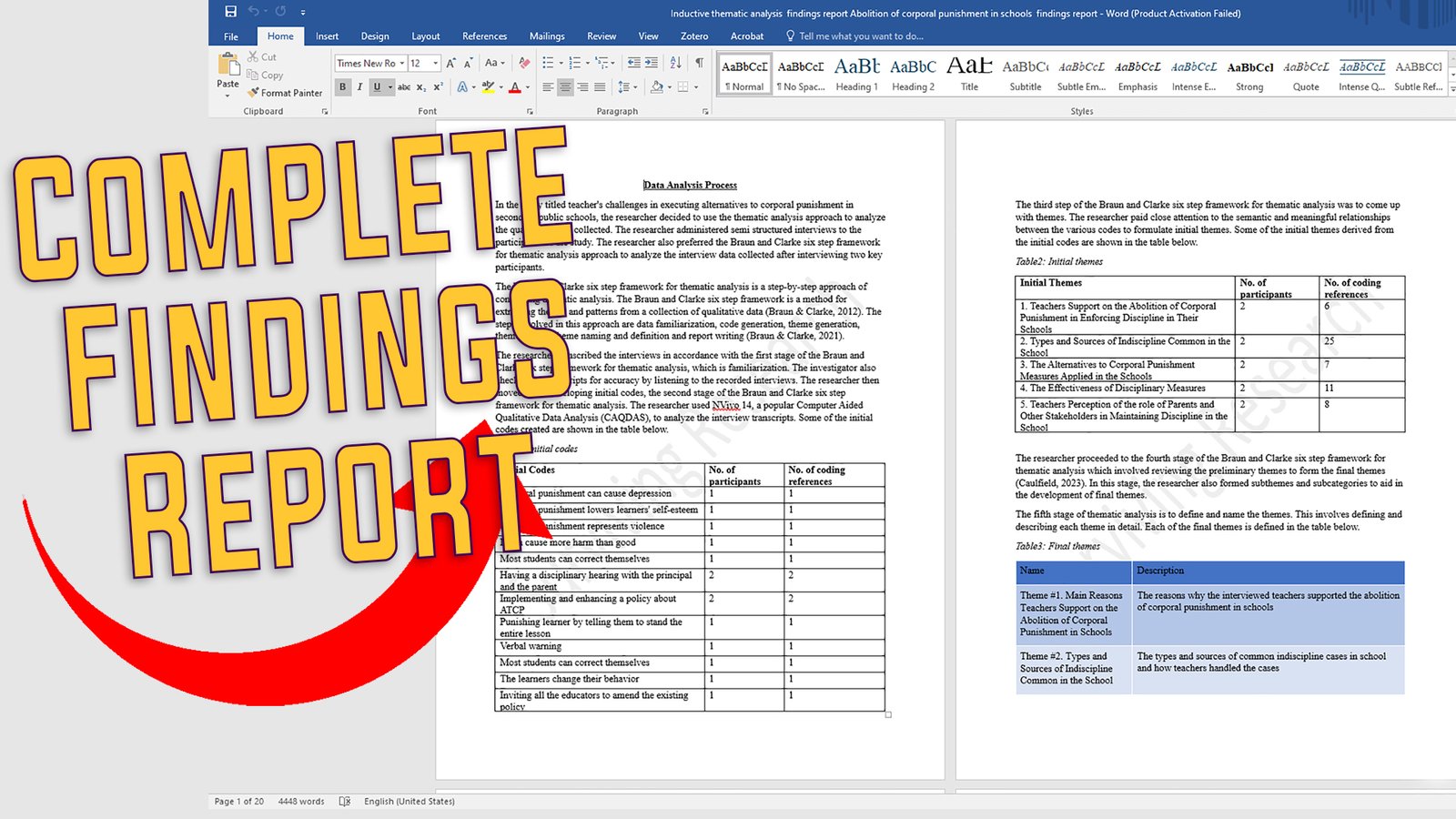How to analyze PDFs and images in Nvivo (secondary data artifacts)
In my previous articles, I have mainly focused on showing how we can conduct thematic analysis and even code interview transcripts using Nvivo.
However, what happens when you want to use secondary sources such as PDFs and images as your main sources of data in your study?

A PDF

An Image
Some researchers might also decide to combine interview transcripts with secondary sources of information or artifacts. Such as PDFs and images in their qualitative studies.
In this article, we are going to look at how we can analyse PDFs and images in NVIVO.
The example topic that we are going to use in this video is the importance of using teaching aids in the classroom, what’s the importance of using teaching aids in the classroom?

The Study Topic
We want to do some analysis of the PDFs and the images related to this issue of importance of using teaching aids in the classroom.
How can we get codes and themes in PDFs and also in images?
Now, the first thing that I’m going to do is to open Nvivo and create project.
For this one, we are going to just name it importance of using teaching aids in the classroom. I name it like that. I click on next.

Creating a project in Nvivo
We have PDFs and we have images.
Let’s start with the PDFs here.
Analysing PDFs in Nvivo

Analysing PDFs in Nvivo
How do we analyse PDFs or secondary scholarly articles in Nvivo?
Let’s say you are conducting a study, importance of using teaching aids in the classroom. And you’ve interviewed some teachers and the teachers have given you some PDFs as artifacts or secondary articles.
How do we analyse them? Two ways.
Inductive Analysis of PDFs in Nvivo
We have the inductive way, the inductive way of analysing this is:
First, we can read through the PDFs as we would do regular transcripts and go and code information that we find interesting.
Let’s look at this statement. Teaching aids also facilitate the students to understand the lessons presented by teachers.
Let’s highlight this statement for instance.

A section in a PDF in Nvivo
Drag and drop it inside the code section and say, remember the research topic I’m exploring is the importance of using teaching aids in the classroom.
And we can see already here that Teaching aids facilitate students to understand lessons presented by teachers.
So I can code this as teaching aids promote understanding and click okay.

The code teaching aids promote understanding is created
Teaching aids can result in effective learning and able to attract students to pursue activities in the classroom.

A section of a PDF
So, teaching aids can increase the interest of students in the classroom, okay?

The code teaching aids can increase the interest of students in the classroom is created
That’s another thing that teaching aids can do.
Teaching aids usage can help teachers to attract students in the learning process of reading remedial students.

A section of a PDF
That can also represent that teaching aids can attract or can increase the interest of students in the classroom so we drag and drop it in the code teaching aids can increase interest of students in the classroom.
These are codes that I’m creating. So, whether we have secondary sources, which are PDFs, we can extract statements from PDFs and get codes.
And later we can combine codes to get themes.
That’s an example of one way that we analyse PDFs in Nvivo. And this is inductive. Inductive means we are reading the material in our PDFs or secondary sources, and the material is informing how we create our codes.

Inductive thematic analysis
Inductive process involves letting the data provided by participants or the data in the PDFs in this case, determine our codes. Then we combine that data or we combine the codes to form themes.
To understand more on the difference between inductive and deductive, check out this article Thematic Analysis Examples: Inductive and Deductive Step by Step
Deductive Analysis of PDFs in Nvivo
Now, we can also analyse the PDF deductively. Let’s say we have a PDF.
How do we do the deductive coding process? The tool or NVivo can help you to do deductive coding in many ways. First. If you have PDFs or secondary sources, you can do something we call auto coding.
I went to the PDFs, click on the two PDFs, and then I go to auto code.

The auto code section in Nvivo
You want to identify themes, and we want to auto code all this information, we want to see the main issues that come out of these PDFs.
All these are the main issues and we click finish.

The main issues after auto coding
Let’s go to the auto coded themes.

Auto coded themes
I can go review the information in the auto coded theme and delete all information that’s not important to our study and be left with only information that’s important to our study.
Basically, that’s how we do a kind of deductive coding in Nvivo.
Then we can do a word search or text search query.
If you remember, we are looking at the importance of using teaching aids in the classroom, If I go to my PDFs, select both of them, and go to query, then text search query.

Text search query
And I want to look for text such as teaching aids in these PDFs. Then we run query. I can look for this in a PDF.

Searching for the words teaching aids
Let’s run query.
Let’s look at that in the PDFs. You see teaching aids, teaching aids.
The words teaching and aids appears in the PDFs.

The words teaching and aids appear in the pdf
So visual aids are instrumental, these aids in learning English as they play a vital role in facilitating comprehension.
I can go highlight that section.

A section of the PDF
Go to the deductive initial codes. This is deductive because I’m looking for specific things.
For instance, here, this one, importance of teaching aids, the section we have highlighted above form the code, they play a vital role in facilitating comprehension.
I can drag and drop the section and say promote comprehension and click OK.

The code promote comprehension is created
These aids bring clarity to the teaching process by assisting educators in effectively conveying information to students.

A section of the PDF
Drag, drop it in the codes section and say assist teachers to teach more effectively.

The code assist teachers to teach more effectively is created
Basically, you can see how we can code PDFs or any other scholarly articles or material deductively by first doing auto coding using Nvivo and then looking for any important information or searching specifically for specific issues which is also a deductive way of coding and then coding those issues.
And then we are going to consider them as themes later, basically this is how we conduct the process of both inductive and deductive thematic analysis on PDFs in Nvivo.
We also have images.

Analysing images
Let’s look at how we can analyse images in Nvivo.
How can we analyse images in Nvivo? By tagging them, for instance, here we have a teacher using teaching aids.

Image showing the teacher using teaching aid
Basically, what we do is, we open the image, and then we can draw, just dragging your mouse over an image, and we can code this. Let’s code this in the inductive initial code section.

Highlighted section of an image
I can tag this image as teacher using an abacus as a teaching aid.

The code teacher using an abacus as a teaching aid is created
It’s like we are adding captions to the pictures which are the codes in this case and later we can include these pictures in our report.
So, teacher using abacus as a teaching aid.
Let’s have an example of another image.
You can see there’s a teacher showing students a globe. That’s a teaching aid.

Teacher showing students a globe
We can highlight this section. We can code this as teacher using a globe as a teaching aid. And click OK.

The code teacher using a globe as a teaching aid is created
Let’s have another image. For example, this image. We can see these are visual aids that teachers are using to teach. The, letters of the alphabet to kindergarten or preschool students.

Image showing the letters of the alphabet
We can highlight this and say an example of a teacher using teaching aids in the classroom click OK.

The code an example of a teacher using teaching aids in the classroom is created
Basically, that’s how we can code images and PDFs in Nvivo. We just go in, and if we are using an inductive process, we extract information as we would do in a regular interview.
On the other hand, if we are doing deductive, we can use tools such as AutoCodes. And text search and word search query to get specific information which we can code later.
These are the main ways we can analyse PDFs in Nvivo, and also the coding of images.

